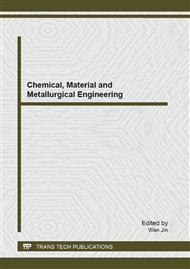p.49
p.53
p.58
p.62
p.68
p.72
p.78
p.83
p.88
Determination of the Geographic Origin of Rice by Chemometrics with the Ethyl Acetate Extracts from Rice
Abstract:
To distinguish the geographic origin of rice, high performance liquid chromatogram of the ethyl acetate extracts of rice was analyzed by principal component analysis (PCA) and linear discriminant analysis (LDA). Total of 23 characteristic peaks which closely related to the origin information were determined by stepwise LDA and PCA. Among these characteristic peaks, the peaks at 22.06min, 38.00 min, 40.66 min, 35.93 min, 17.87 min and 5.39min played even more significant roles. The discrimination accuracies and cross-validation obtained by LDA achieved 100.0% and 97.7%, respectively. The results indicated that the proposed method could be efficiently used to control the quality of Xiangshui rice and providing a reference method for chemical pattern recognition for other geography sign product.
Info:
Periodical:
Pages:
68-71
Citation:
Online since:
August 2013
Authors:
Price:
Сopyright:
© 2013 Trans Tech Publications Ltd. All Rights Reserved
Share:
Citation:


